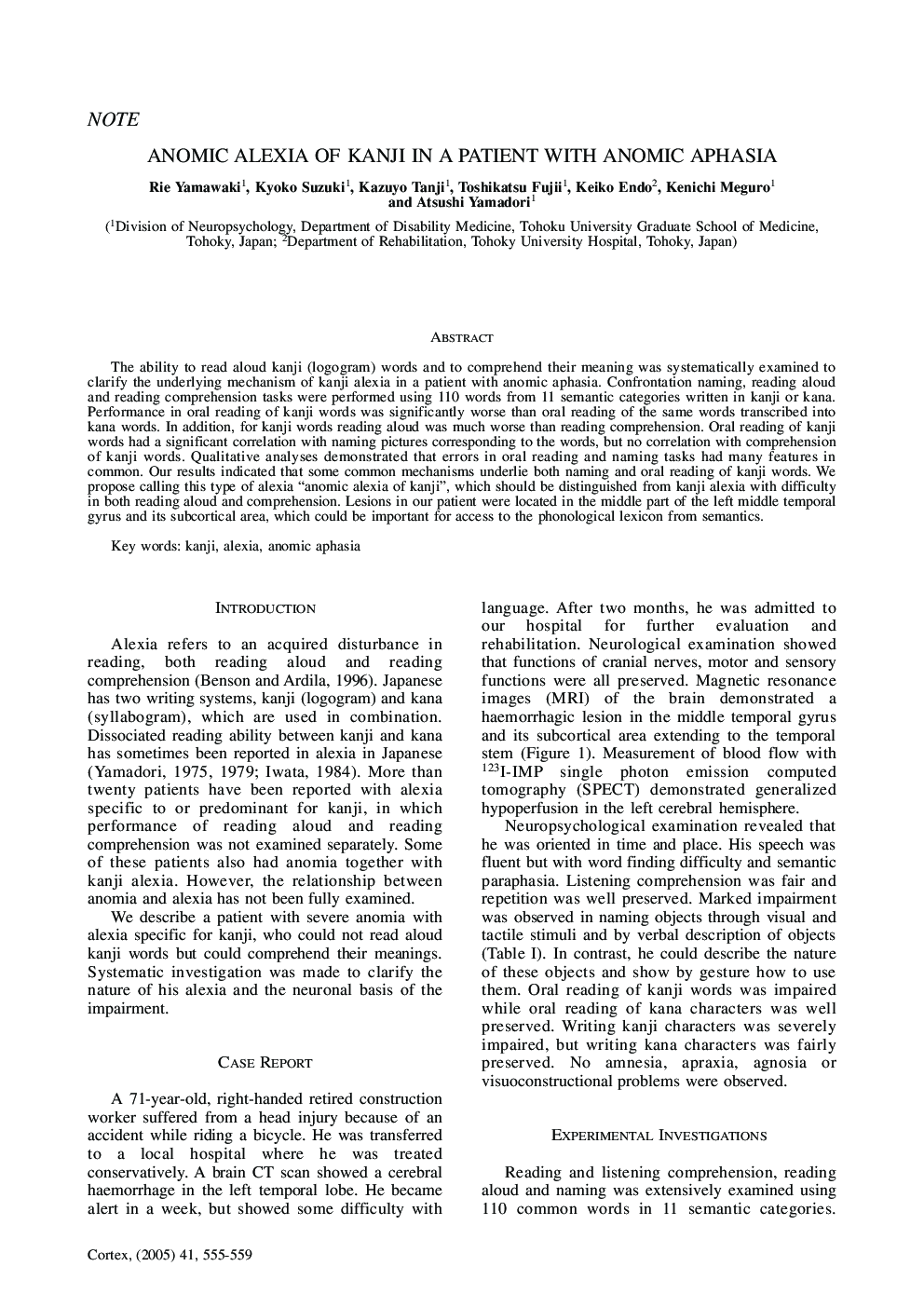| Article ID | Journal | Published Year | Pages | File Type |
|---|---|---|---|---|
| 10463777 | Cortex | 2005 | 5 Pages |
Abstract
The ability to read aloud kanji (logogram) words and to comprehend their meaning was systematically examined to clarify the underlying mechanism of kanji alexia in a patient with anomic aphasia. Confrontation naming, reading aloud and reading comprehension tasks were performed using 110 words from 11 semantic categories written in kanji or kana. Performance in oral reading of kanji words was significantly worse than oral reading of the same words transcribed into kana words. In addition, for kanji words reading aloud was much worse than reading comprehension. Oral reading of kanji words had a significant correlation with naming pictures corresponding to the words, but no correlation with comprehension of kanji words. Qualitative analyses demonstrated that errors in oral reading and naming tasks had many features in common. Our results indicated that some common mechanisms underlie both naming and oral reading of kanji words. We propose calling this type of alexia “anomic alexia of kanji”, which should be distinguished from kanji alexia with difficulty in both reading aloud and comprehension. Lesions in our patient were located in the middle part of the left middle temporal gyrus and its subcortical area, which could be important for access to the phonological lexicon from semantics.
Related Topics
Life Sciences
Neuroscience
Behavioral Neuroscience
Authors
Rie Yamawaki, Kyoko Suzuki, Kazuyo Tanji, Toshikatsu Fujii, Keiko Endo, Kenichi Meguro, Atsushi Yamadori,
